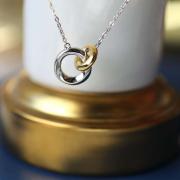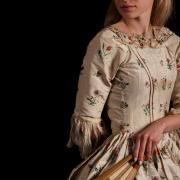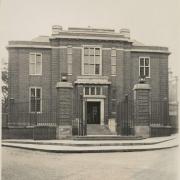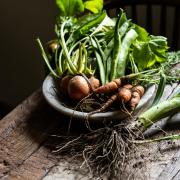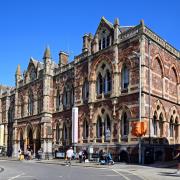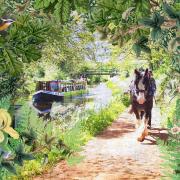There’s evidence of earthenware being made in North Devon in the 17th century and even earlier - but it was the Fishley pottery at Fremington, founded by George Fishley in the early 1800s, that helped kick-start the region’s tradition of decorative earthenware as well as functional wares.
Fishley’s Fremington Pottery had access to two clays - Combrew clay from the family farm to use for throwing and a fine white clay used for the decorative element. The application of this second clay gave rise to the style of pottery known as slipware. This, along with sgrafitto work, is a style the Fishley potters are particularly well known for.

Edwin’s work had a huge influence on the later Studio Pottery movement, including Bernard Leach and Japanese artist, Hamada Shoji. Leach was known to refer to him as ‘the last peasant potter’. Although this wasn’t strictly true as there were other rural potters working at the same time, these contemporary potters regarded Edwin Beer Fishley as the genuine voice of an important, once vibrant tradition.

William built his pottery at Braunton in 1913, basing the design of the kiln on the one at Fremington. Renowned potter Michael Cardew visited William at his pottery and took throwing lessons from him. Cardew was another whose work was influenced by the Fishley pottery tradition; he went on to become considered as the modern potter who was most successful in revitalising the British slipware tradition.

Margaret Squance lives in Braunton, and is the great, great-granddaughter of Edwin Beer Fishley. She says her interest in her family’s heritage was sparked by childhood visits to her great uncle William, who, at that time, was working out of a pottery in Clevedon: 'He used to give me miniature pots and jugs which I thought nothing of. Then one day I went to Bristol and saw them for sale at a market, and I got the bug!'

For Margaret, the family connection plus her passion and enthusiasm for her heritage have always been important. She says: 'I’ve learnt so much, and met such lovely people, Fishley Pottery has been an exciting part of my life!'

Chilcotts Auctioneers in Honiton will auction the Fishley collection in October. They are great admirers of the craft, as auctioneer and cataloguer, Mary Chilcott explains: 'We’re thrilled and honoured to be handling the sale of this marvellous collection. Seeing so many examples of Fishley pottery from different eras together in one place gives a real sense of the scale of the family’s work. For a small North Devon pottery working in the shadows of the more renowned kilns of Bideford and Barnstaple, they paved the way for later independent studio potters.'

The items at auction include over 50 pieces from several generations of the Fishley family. These range from classical and biblical subjects, art pottery and harvest jugs, to standard ware and made-to-order pieces; some of the larger vases may well have been test pieces. There are several quirky pieces, such as a ‘puzzle jug’ and a pair of frog flower holders. Overall, these pieces are in good condition commensurate with their age.
The auction takes place on October 12 at Chilcotts’ Dolphin Salerooms, High Street, Honiton. Viewing will be available from October 5. chilcottsauctions.co.uk




